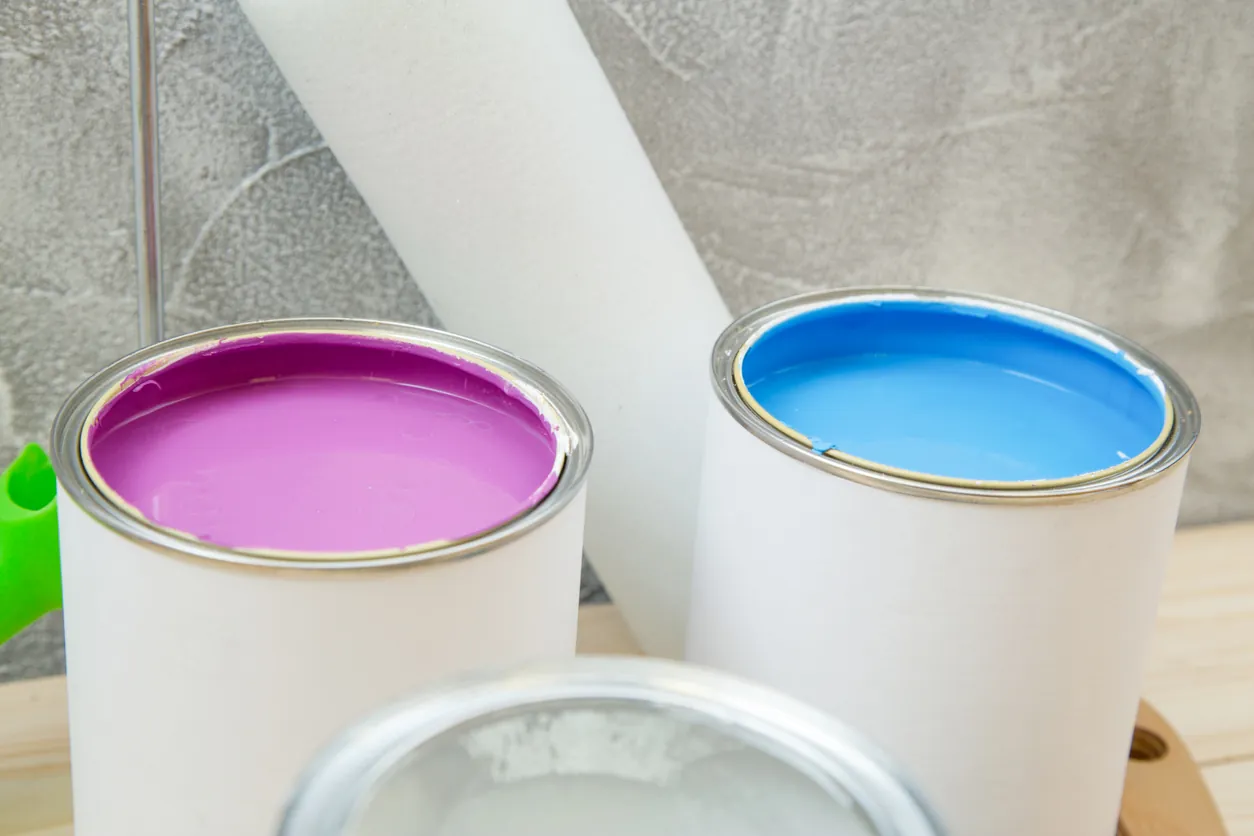Odor-absorbing paint is a special type of paint designed to reduce and neutralize unpleasant smells in your home. This type of paint is ideal for areas where odors are a constant concern. Join us as we explore what odor-absorbing paint is and the best places to use it in your home.
Understanding Odor-Absorbing Paint
Odor-absorbing paint is a unique solution for dealing with unwanted smells in your home. It works by using special additives that trap and neutralize odors so that your living spaces smell fresher. This type of paint is especially useful in areas prone to strong or persistent odors.
The paint’s effectiveness comes from its ability to absorb and break down various odors, including those from cooking, pets, and smoke. Unlike regular paint, odor-absorbing paint continues to work long after it dries, providing ongoing odor control. It’s a practical choice for anyone looking to maintain a clean and pleasant-smelling environment.
Benefits of Odor-Absorbing Paint
Odor-absorbing paint offers several advantages for maintaining a fresh and clean-smelling home. Here are several benefits of using this type of paint.
- Neutralizes Odors: Odor-absorbing paint captures and breaks down unpleasant smells to keep your home smelling fresh.
- Improves Air Quality: This paint helps improve the overall air quality in your living spaces by reducing odors.
- Long-lasting Effect: Unlike air fresheners that provide temporary relief, odor-absorbing paint continues to work long after it has dried.
- Versatile Use: It can be used in various areas of the home, including kitchens, bathrooms, and laundry rooms, where odors are more likely to occur.
- Easy Application: Odor-absorbing paint is applied just like regular paint. So, it is a convenient option for any painting project.
- Variety of Colors: Available in many colors and finishes, it allows you to maintain your home’s aesthetic while providing odor control.
Where to Use Odor-Absorbing Paint

Odor-absorbing paint is specifically useful in areas where odor might be a constant problem. Below is a list of ideal places to use this innovative paint.
Kitchen
Strong odors from cooking and food preparation are common in the kitchen. Odor-absorbing paint helps neutralize these smells, keeping the kitchen air clean. Applying it to the walls and ceiling ensures that cooking odors do not linger long after meals.
Additionally, this paint is easy to clean, making it perfect for a high-traffic area like the kitchen. It provides both odor control and a durable surface that withstands regular cleaning.
Bathroom
Bathrooms are another area where odors can be a problem due to humidity and frequent use. Odor-absorbing paint helps keep your bathroom smelling fresh by capturing and neutralizing unpleasant smells. It also resists moisture, which prevents mold and mildew growth.
Using odor-absorbing paint in bathrooms enhances the overall cleanliness and comfort of the space. It’s especially useful in guest bathrooms so that visitors will have a more pleasant experience.
Laundry Room
The laundry room often deals with odors from dirty clothes and cleaning chemicals. Odor-absorbing paint helps maintain a fresh atmosphere, making the space more pleasant to use. It also handles the moisture and heat generated by laundry appliances.
Applying this paint in the laundry room helps manage odors and maintain a clean environment. It keeps the space functional and comfortable for your regular laundry tasks.
Basement
Basements can develop musty odors due to poor ventilation and dampness. Odor-absorbing paint is an effective way to combat these smells. It neutralizes odors and helps control moisture.
Using this paint in basements improves air quality and creates a fresher environment. It’s a practical choice for finishing or renovating basement areas.
Pet Areas
Areas where pets spend a lot of time can quickly accumulate odors. Odor-absorbing paint is ideal for these spaces, as it helps keep pet smells under control. Apply it to walls in rooms where your pets eat, sleep, or play.
This paint not only neutralizes odors but is also durable enough to handle pets’ wear and tear. It keeps your home smelling pleasant while providing a tough surface that stands up to daily use.
How to Apply Odor-Absorbing Paint

Applying odor-absorbing paint is a straightforward process if you follow these proper steps:
Prepare the Surface
Start by cleaning the walls thoroughly. Remove any dust, dirt, or grease with a mild detergent and water. Ensure the surface is dry and free from any loose paint or wallpaper before you begin.
Proper preparation helps the paint adhere better. Inspect the walls for any cracks or holes and repair them. Sand the surface lightly to create a smooth base for the paint.
Gather Materials
Before you start, gather all the necessary tools and materials. You will need odor-absorbing paint, brushes or rollers, painter’s tape, and drop cloths. Having everything ready makes the process efficient.
Check the paint manufacturer’s instructions for any additional items you might need. Having all materials at hand will save time and prevent interruptions during the painting process.
Protect Surrounding Areas
Use painter’s tape to cover edges and trim. Lay down drop cloths to protect the floor and any furniture from paint splatters. This helps keep your work area clean.
Properly covering these areas reduces the cleanup needed afterward. It also prevents accidental paint spots on surfaces that should not be painted.
Prime the Surface (If Needed)
Some surfaces may require a primer to help the paint adhere better. Check the paint manufacturer’s recommendations. If a primer is needed, apply it evenly and allow it to dry completely.
Priming the surface can enhance the paint’s performance. It creates a uniform base that helps the odor-absorbing paint work effectively.
Apply the Paint
Stir the paint thoroughly before use. Apply the first coat of odor-absorbing paint using a brush or roller. Start from the top and work your way down to cover the entire surface evenly.
Allow the paint to dry according to the manufacturer’s instructions. Applying the paint in this manner ensures even coverage and maximizes the odor-absorbing properties.
Apply Additional Coats
If necessary, apply a second coat of paint for better coverage. Make sure the first coat is completely dry before applying the second one. Follow the same technique as the first coat.
Multiple coats may be needed for darker walls or higher odor absorption. Each coat should be applied evenly for a consistent finish.
Clean Up
After painting, clean your brushes and rollers immediately to prevent the paint from drying on them. Carefully remove the painter’s tape while the paint is still slightly wet.
Dispose of any drop cloths and ventilate the area to help the paint dry and activate its odor-absorbing properties. Proper cleanup ensures your tools are ready for future use and keeps your workspace tidy.
Conclusion
Odor-absorbing paint is a practical solution for maintaining a fresh, clean-smelling home. This type of paint not only neutralizes odors but also improves air quality and enhances the appearance of living spaces.
If you need professional application of odor-absorbing paint, contact Custom Painting, Inc. Call us at 925-294-8062 or fill out a Contact Form for more information.

